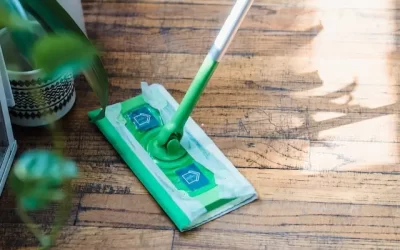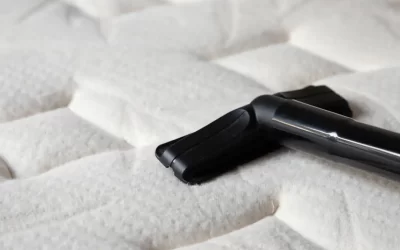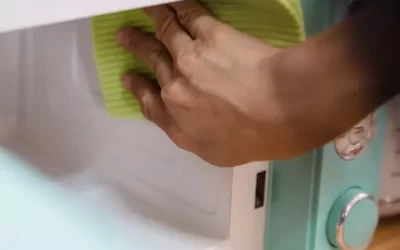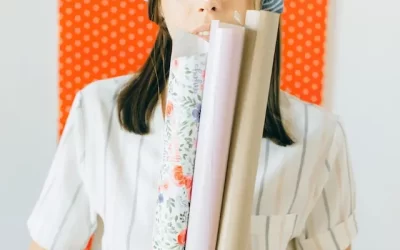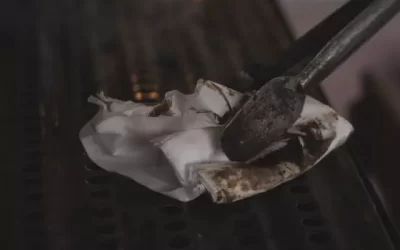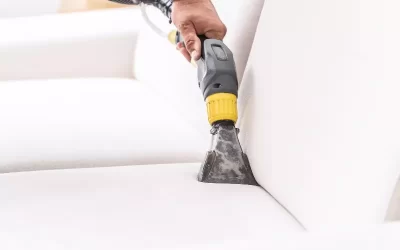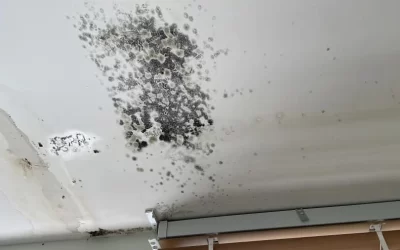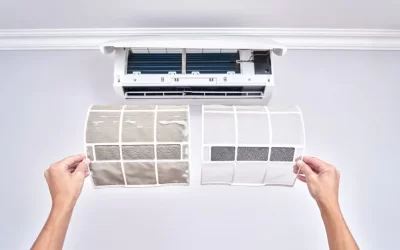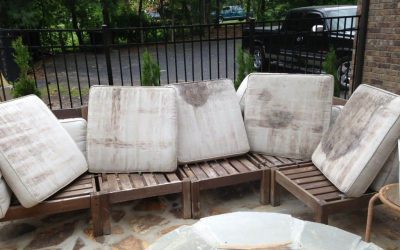How to Remove Stains on Painted Walls before Moving Out or before an Inspection
How to Remove Stains on Painted Walls
When you move out there are a number of things you have to do. One thing you’ll likely notice as you are moving your furniture out are stains and scuff marks on the walls. Some scuff marks will be obvious. Some marks and stains will be a mystery. The purpose of this article is to help give you advice on how to remove stains on painted walls.
The thought of a landlord inspection can leave you with heart palpitations. You want to make sure that you are going to get our bond back. You don’t want to have an argument because the landlord or property manager finds something that they are trying to use as an excuse to get out of paying you back your bond.
If you notice marks on your walls and you are worried about removing these blemishes, then this article is for you. Whilst this article is predominantly aimed at tenants who are looking to remove stains on painted walls before moving out, the step by step process outlined below is relevant to those that own their own house as well.
We will cover how to remove common stains on painted walls that you’re likely to encounter.
First things first – Preparing to remove the stains.
Dust your walls first
Before you get started, the first step in wall stain removal is to make sure that your walls are relatively clean. You need to make sure that you have removed any excess dust and dirt to make stain removal easier. Use a cloth where you can reach and a soft bristled broom for those areas out of reach. Alternatively, you could invest in a dust mop.
You need to dust first to identify what stains are left behind. If you are lucky, you may find that there are no more stains – you may find that you have removed them all.
Identifying the type of stain or scuff mark
There are a few common types of wall stains. The most common is usually scuff marks or bumps from furniture. Other common types of stains are oil stains or water based stains. Whilst there are some similarities between them, when you have to remove stains on painted walls, there are also some differences.
Let’s look at some of the more common stains. Oil-based stains include shoe polish, crayons, and grease. Water-based stains are usually food-derived, such as wine, ketchup, mustard, and such.
Before trying different products and heavy duty cleaning materials we recommend a simple approach first. Before sticking heavy duty chemicals on your walls to remove stains, start with a clean sponge and warm water. You may add a little dishwashing detergent. If you are going to buy some cleaning products, you can choose safer and more cost effective products first – most supermarkets will sell sugar soap or magic erasers (these are what we primarily use for wall stain removal because they are safe and effective so they are highly recommended!).
In many circumstances, these products and household items will be enough, and it can be managed quite quickly. If this has helped you to remove stains on your painted walls you can stop reading now. If the stains are still there, then you should continue reading and we shall share some further tips regarding the most common stains.
Crayons and Coloured Pencils
Do you have young children living in the house? It doesn’t matter how much paper you give them or how much you tell them not to, chances are they will want to decorate your walls. An often heard refrain from budding Monet’s is “I wanted to make it pretty.” The world is their canvass.
If the dishwashing detergent or sugar soap mix above (or magic erasers) doesn’t work, try using baking soda. If you mix baking soda with warm water to make a paste that you can smear onto the stain. Leave the paste to soak into the wall for an hour or two and then you should be able to remove the stain from painted walls with some light scrubbing. If crayons are the problem, applying heat (i.e. putting a heater near the stain for a little while) can help make the job easier. Crayons are waxed based and heat can melt the stain a little to make cleaning easier.
One final tip though – consider taking a photo of their artwork so you can use it to embarrass your child at their 21st birthday.
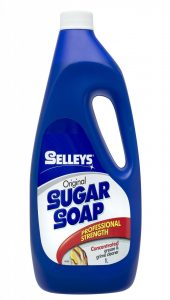
Credit: Sellys
Permanent Markers & Pens
The only things worse than crayons or pencils in the hands of your children is if they get their hands on permanent markers. Whilst there are some ways you can remove permanent marker stains from painted walls, there is an increased risk of damaging the paint on the wall.
You should spot test any attempt to remove permanent marker stains in an obscure area before trying to remove all of the stain.
Your options for removing permanent marker stains are rubbing alcohol (with a cotton ball, sponge, or cloth). Spraying hairspray on the stained area is also known to work. Other solutions that you can try, using everyday items from around the house include nail polish remover and shaving cream.
As mentioned, permanent marker stains are hard to remove and you may need to touch up the paint on the wall where you have removed a permanent marker stain. Be prepared for this.
These are some of the most common oil based stains. Let’s look at some water based stains and how to remove them from painted walls.
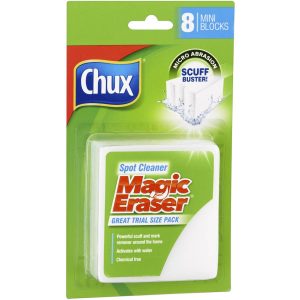
Source: Chux
Water-based stains
As mentioned earlier in this article, water based stains can include wine or food based stains. They can also be caused by larger problems around the house – clogged gutters, a leafy roof, indoor humidity or a lack of ventilation.
A great way to clean water based stains is with bleach. No, I don’t mean straight bleach. You need to mix 1 part bleach to 3 parts water.
If you are using bleach it is important to be safe. Wear gloves and potentially even safety glasses. If it gets on your skin or in your eyes it can burn and cause an injury.
To clean off the stains with a bleach solution, you apply to the stained area and leave to stand for 20 minutes. After 20 minutes you remove the stains from your painted walls by grabbing a clean cloth and bucket of water to wipe off the solution.
NOTE: ALWAYS test the bleach solution on an inconspicuous part of the wall before trying this method. It is risky and should only be done as a last resort and if you are prepared to paint the wall if it fails.
Mould & Mildew
Another common problem you might find around the house is mould or mildew. You should deal with this problem as soon as you notice it, and not just when you are moving out. To remove mould or mildew from your walls you should use a mixture of vinegar and water. You can remove it from painted walls by dabbing your vinegar mix on the stain and then rinsing with clean water. Please make sure you wear safety equipment when cleaning mould or mildew, especially a P2 Mask because breathing in mould spores is really bad for your health.
Once you have successfully removed the mould, you need to ensure that you deal with the cause of the problem so it doesn’t keep popping up. You may also find that the mould leaves a stain, which cannot be removed. This happens when the mould has been left to fester for an extended period of time. In these cases you will need to paint over the affected areas. We suggest using a special mould-inhibiting paint. More information on How to Remove Mould Naturally, and how to prevent it from coming back, check out the article in this link.
Some tips for your future home.
With this article we have shared with you some tips to remove stains from painted walls when you are moving out. If you want to make this easier, then please consider that maintenance is key. Regularly looking after your walls will make it easier to avoid stains and, should they occur, easier to remove them.
If you are regularly looking after your painted walls, then you will notice stains earlier. As soon as you notice a stain, you need to act. The longer you leave it the harder a stain will be to remove. If you leave it too long you may need a new paint job.
If you are looking at maintenance, here are the things that you should do:
- Regularly dust and vacuum your walls. Try to make sure you use the right vacuum extension. Work your way from top to bottom.
- Regularly wash your walls. Work your way from the bottom up.
- Use old towels or a drop sheet when you are cleaning your walls to catch any drips before they hit the floor.
- Create a bucket of your wall cleaning products – including everything you need for your cleaning solutions as well as gloves and other safety equipment. Make sure you have a number of dry cloths for a final wipe down and dry.
If you are moving out and there are some stubborn stains you haven’t been able to remove from your painted walls, it might be time to get in touch. We have the right products and expertise to do your end of lease clean and can usually remove these stubborn stains from your walls – as well as all of your other cleaning requirements.
We’d also love to help you out in your new house. If you would like us to regularly clean your house and look at different cleaning options don’t hesitate to get in touch for a no-obligation quote.
Book a home cleaning service or end of lease cleaner online instantly!
Book a home cleaning service or end of lease cleaner online instantly!
Check Out our Other Posts
How to Clean a Wooden Floor
Knowing how to clean a wooden floor to ensure its longevity and preserve its natural appeal. Regardless of whether you’re wondering how to clean a hardwood floor or how to clean timber flooring in general, this is the guide for you. Let’s explore the step-by-step process of how to clean a wooden floor effectively and safely.
How to Clean a Mattress
Over time, mattresses become home to grime, mites, bacteria, and allergens, which can impact your health and quality of sleep. But don’t worry – in this ultimate guide, we’ll show you everything you need to know about how to clean a mattress and keep it in tip-top condition.
How to Clean a Microwave
Looking for a hassle-free way to clean your microwave? Wondering how to clean a microwave without scrubbing it? If you’re tired of struggling with a dirty microwave, you’re in the right place! Today, we’re going to have some fun and learn how to clean a microwave like a pro! You’ll be amazed at how easy it is, and your future self will thank you for the effort.
How to Clean Wallpaper
In this comprehensive guide, we’ll teach you how to clean wallpaper like a pro, using a variety of methods and techniques that are safe and effective for all types of wallpaper. Whether you have vinyl, fabric, or paper wallpaper, you’ll find everything you need to know to get your walls looking like new again. Grab your cleaning supplies, roll up your sleeves, and let’s dive into the ultimate guide on how to clean wallpaper, DIY style.
Cleaning a BBQ – How to Clean a BBQ
In this guide, we’re going to show you just how easy it can be to clean a BBQ and get it ready for your next delicious meal. You’ll learn all the tips and tricks you need to know for cleaning a BBQ like a pro.
9 Tips for Clearing Blocked Drains Using Household Items
There are many different methods you can try when it comes to clearing blocked drains. We’ll go over nine different ways that you can use household items to clear a clogged drain and get your plumbing flowing smoothly again.
Cleaning Fabric Couches
Cleaning fabric couches is actually pretty easy! In this blog post, we’ll give you some simple tips and advice on cleaning fabric couches with common household items. By the end, you’ll definitely know how to keep your couch looking fresh and clean.
How to Remove Mould from Ceilings
Trying to figure our how to remove mould from ceilings? We’ll cover 5 different ways to do it and explain why it’s so important.
How To Clean Air Conditioner Filters
Your air conditioner filter plays a crucial role in keeping your home cool and maintaining good indoor air quality.
Neglecting to clean the filter is one of the reasons that many people struggle to keep their AC running in the summer. That’s why it’s so important to know how to clean air conditioner filters.
How to Clean Mould Off Outdoor Cushions and Furniture
How to clean mould off outdoor cushions and furniture – this article explains how to identify mould and how to clean it off various materials commonly used for outdoor furniture.

